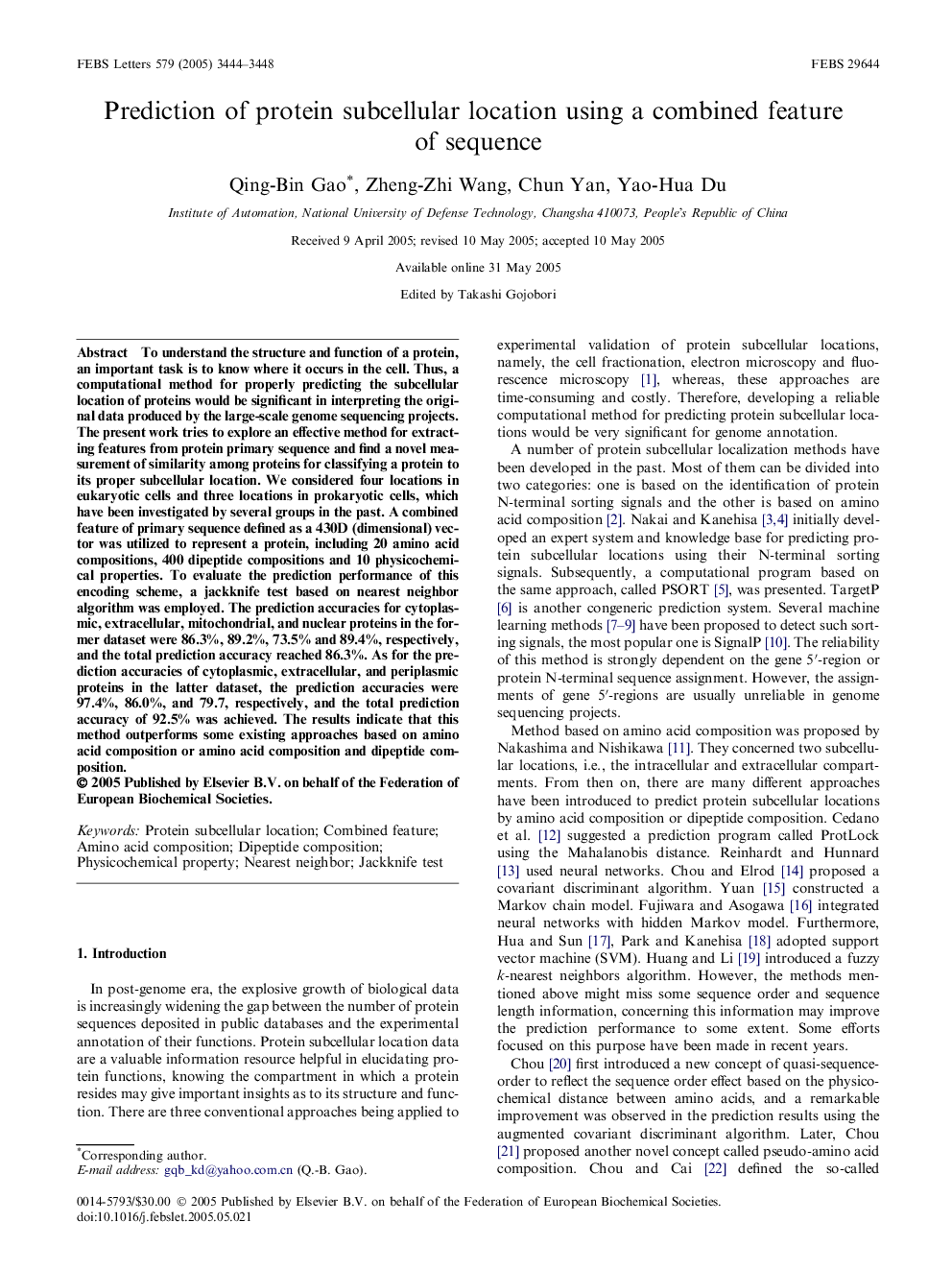| Article ID | Journal | Published Year | Pages | File Type |
|---|---|---|---|---|
| 2052699 | FEBS Letters | 2005 | 5 Pages |
To understand the structure and function of a protein, an important task is to know where it occurs in the cell. Thus, a computational method for properly predicting the subcellular location of proteins would be significant in interpreting the original data produced by the large-scale genome sequencing projects. The present work tries to explore an effective method for extracting features from protein primary sequence and find a novel measurement of similarity among proteins for classifying a protein to its proper subcellular location. We considered four locations in eukaryotic cells and three locations in prokaryotic cells, which have been investigated by several groups in the past. A combined feature of primary sequence defined as a 430D (dimensional) vector was utilized to represent a protein, including 20 amino acid compositions, 400 dipeptide compositions and 10 physicochemical properties. To evaluate the prediction performance of this encoding scheme, a jackknife test based on nearest neighbor algorithm was employed. The prediction accuracies for cytoplasmic, extracellular, mitochondrial, and nuclear proteins in the former dataset were 86.3%, 89.2%, 73.5% and 89.4%, respectively, and the total prediction accuracy reached 86.3%. As for the prediction accuracies of cytoplasmic, extracellular, and periplasmic proteins in the latter dataset, the prediction accuracies were 97.4%, 86.0%, and 79.7, respectively, and the total prediction accuracy of 92.5% was achieved. The results indicate that this method outperforms some existing approaches based on amino acid composition or amino acid composition and dipeptide composition.
